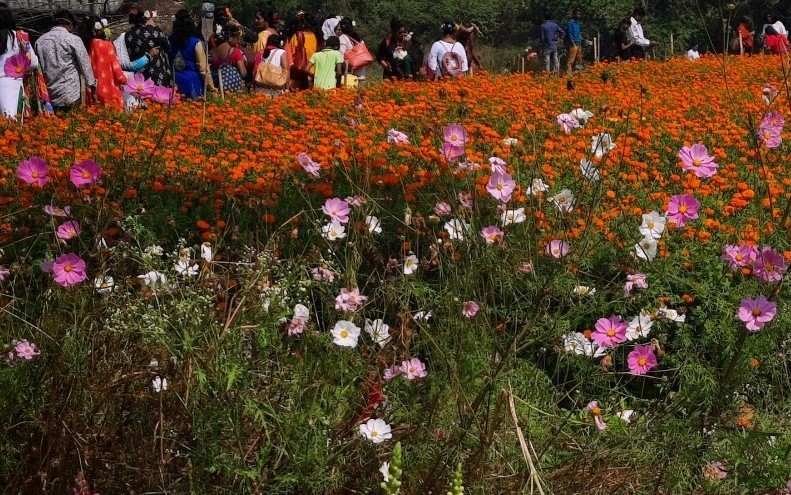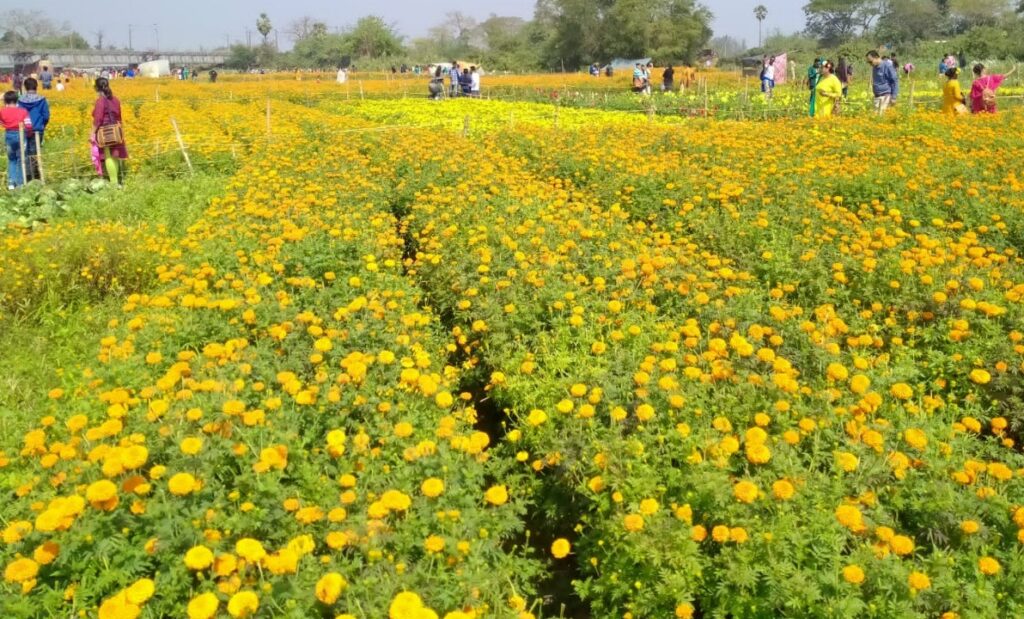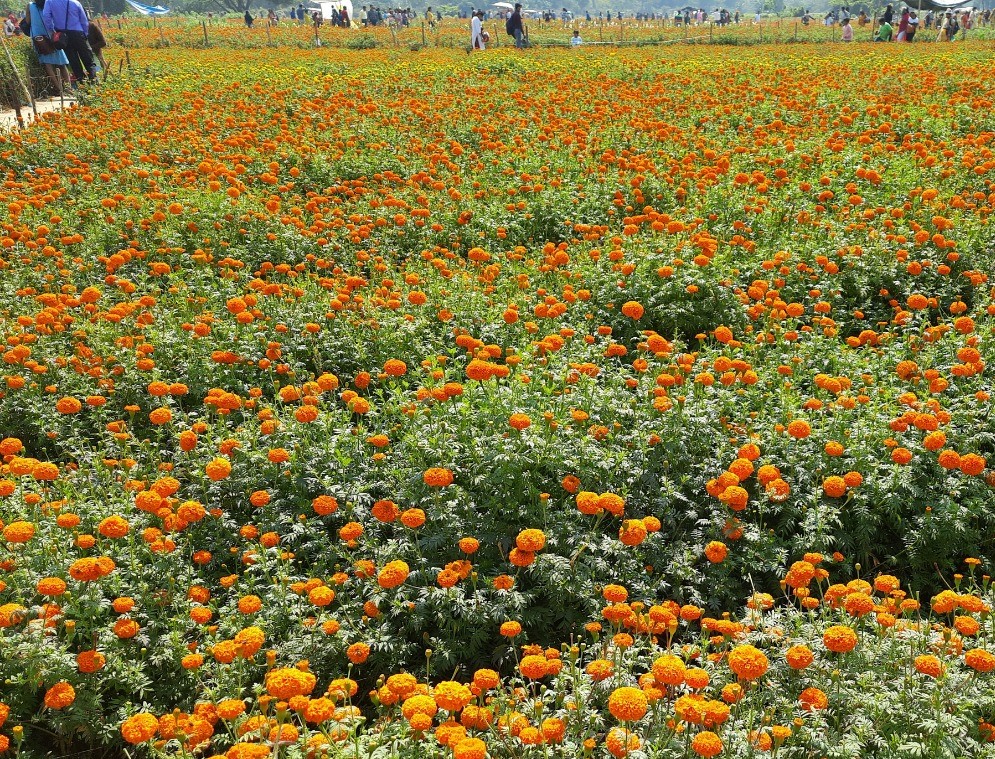For the average middle-class Bengali, whose year-round toil is punctuated by dreams of travel, the prolonged Covid-induced pandemic has sparked an unshakable restlessness. Even the simple pleasure of a daily meal of maach bhaat (fish and rice) feels insufficient to fill the void left by the absence of travel.
Known for their love of exploration, Bengalis faced a conundrum during the pandemic: how to satisfy their wanderlust while staying safe? Over the past two years, the prospect of traveling to distant places was overshadowed by fears of contracting the virus. In response, Bengalis turned to day trip destinations and began embracing nearby locales. One such hidden gem that has gained popularity is Khirai – Bengal’s own Valley of Flowers.
While the phrase ‘Valley of Flowers’ generally creates visuals of Uttarakhand’s Valley Of Flowers National Park or Kashmir’s Indira Gandhi Memorial Tulip Garden before one’s eyes, Khirai, located in the Purba Mednipur district of West Bengal, is no less a charm.

How to reach Khirai
Around 75 km from Kolkata, Khirai is easily accessible from Howrah Station via local trains. Away from the humdrum of the city, it takes around two hours to reach the mesmerising land of flowers. Khirai is also accessible via road so if you are planning an outing, this location is perfect for a day trip.
Also Read: Did you know Bangkok has a real name? We dare you to take this tongue twister challenge
Located in between the Panskura and Khirai railway stations, this land of flowers can be accessed from either stations. From Khirai station one can either hire a battery-operated e-rickshaw (toto) or walk along the railway tracks to reach the fields that at a mere glance evoke the urge to hum the tunes of Laal Neel Shobujeri Mela Bosheche from the Uttam Kumar-starrer movie Chiradiner-1969.
Positioned by the Kansabati river, the Bengal’s Valley Of Flowers welcomes an average travel-hungry person with the sight of a variety of flowers that are literally seen “tossing their heads in a sprightly dance”.
Before further delving into details, it is worth mentioning that although a popular tourist spot and despite bearing the capability of quenching one’s thirst visually, Khirai does not have very many eateries. So, it is advisable to either carry some food and water or buy some snacks while on the train.

What to do at Khirai
Local residents of Khirai mainly engage in farming and rarely aspire to go to the city in search of work. Mainly focused on cultivating flowers, the people of Khirai also sell saplings and earn a living. The saplings of Khirai often travel to big cities like Kolkata, Hyderabad, Bengaluru, Mumbai and others.
While a brisk walk around the area amid bobbing heads of flowers is a soothing experience, one can also buy garlands and tiaras made of flower that are sold by the local women and children.
Apart from marigolds, that are found in abundance at Khirai, one can also see vast fields of dahlias and chrysanthemums along with at least 400 types of other flowers.
While the best time to visit Khirai is between January and early March, in the Monsoons, alongside a consistent hint of petrichor, the air in Khirai is filled with the fragrance of various seasonal flowers.

This little gem in West Bengal is a constant reminder of a line from renowned poet Jibananada Das’s poem –“Banglar mukh ami dekhiyachi, tai ami prithibir rup khujite jaina aar (I have seen the beauty of Bengal, thus I do not set out in search of the world’s beauty).”
Did you know The Theorist also has a WhatsApp channel? Click here to follow us on WhatsApp
